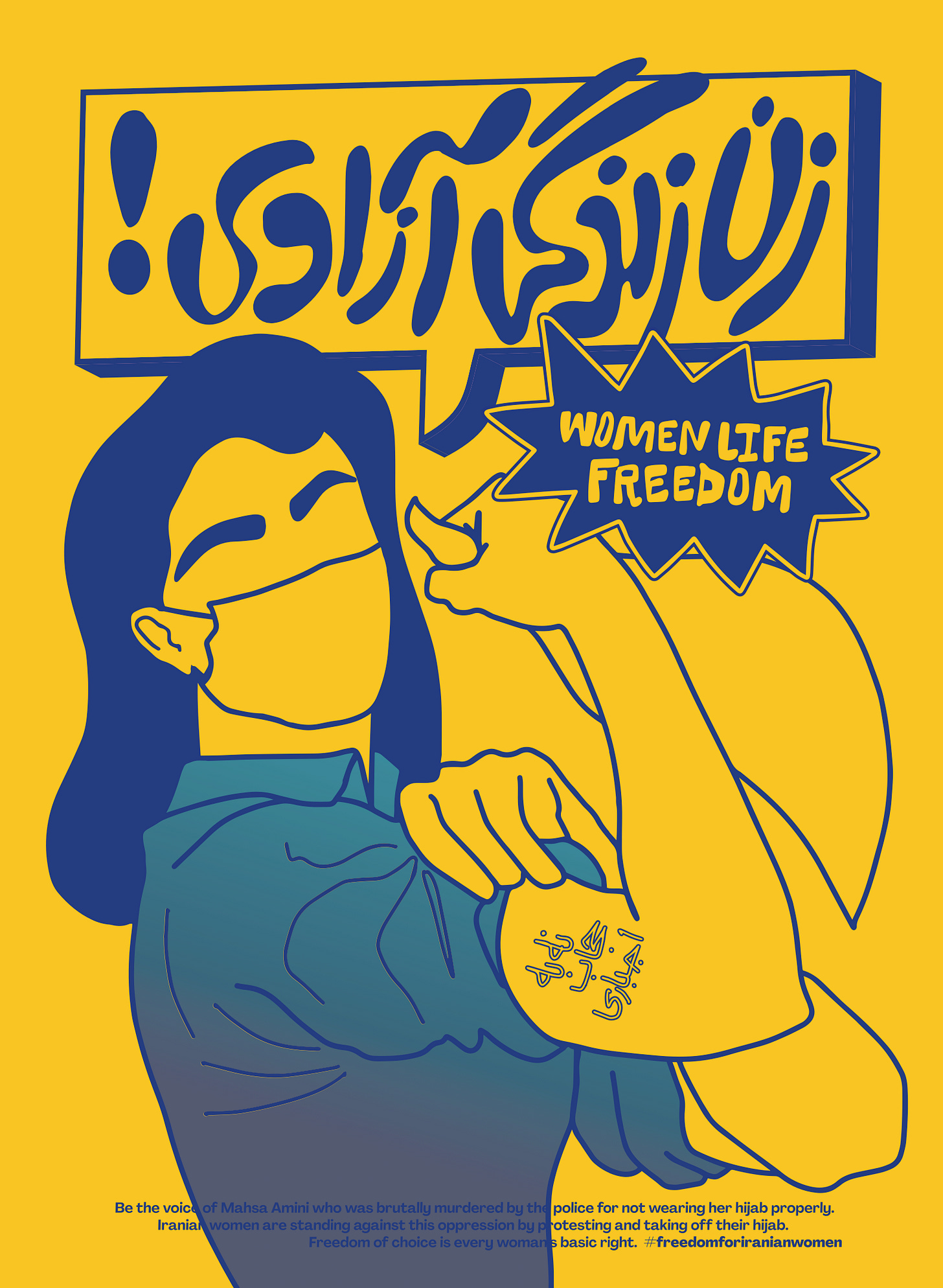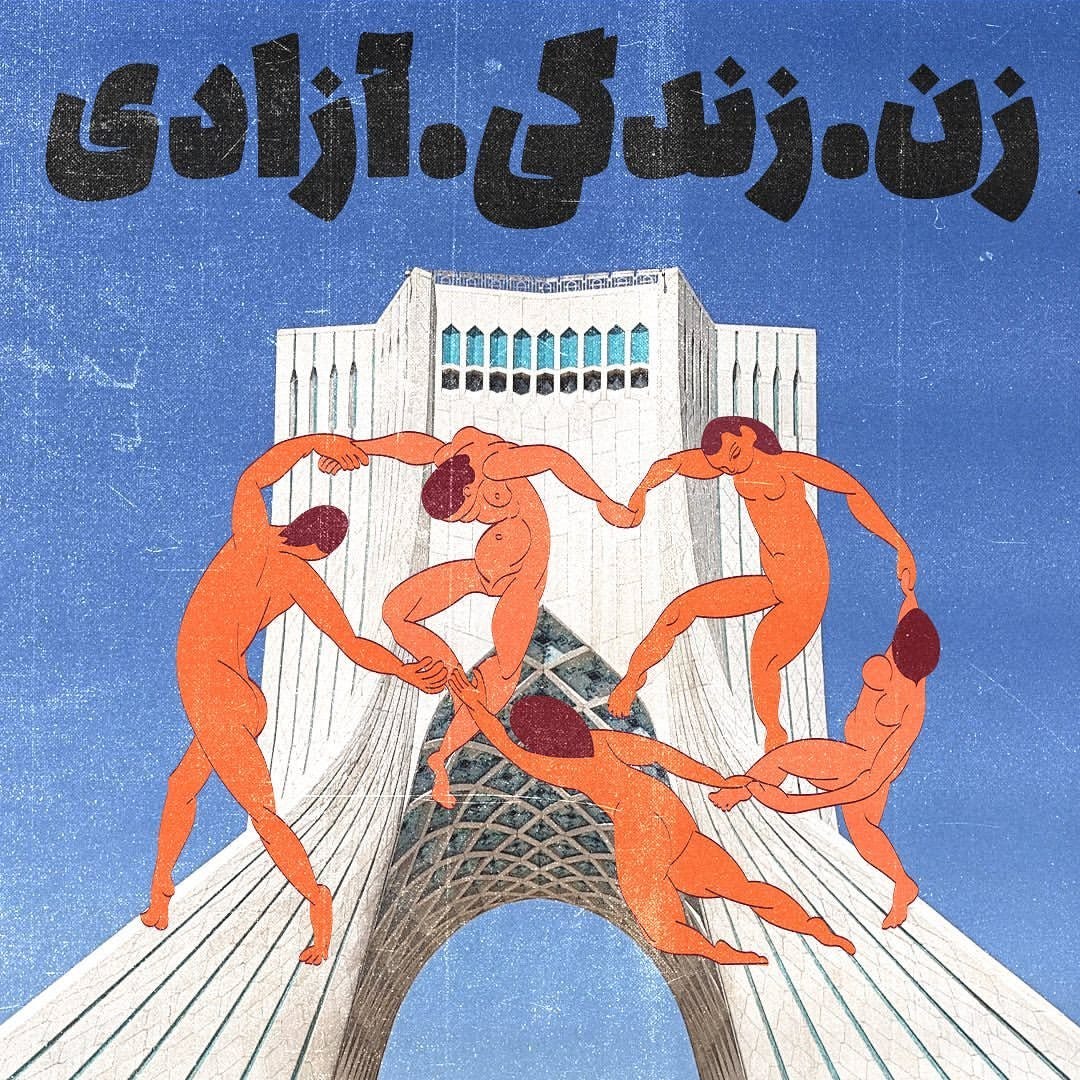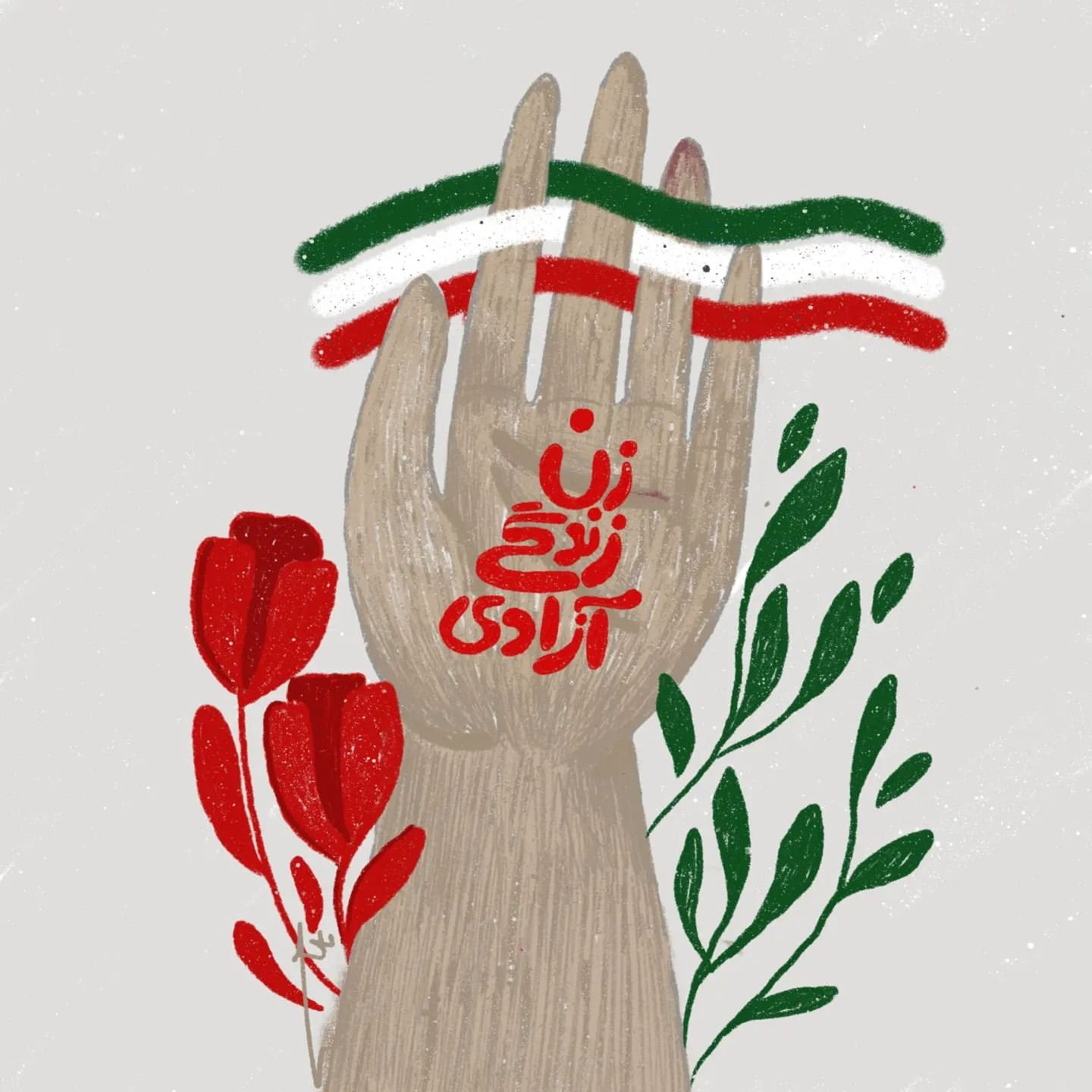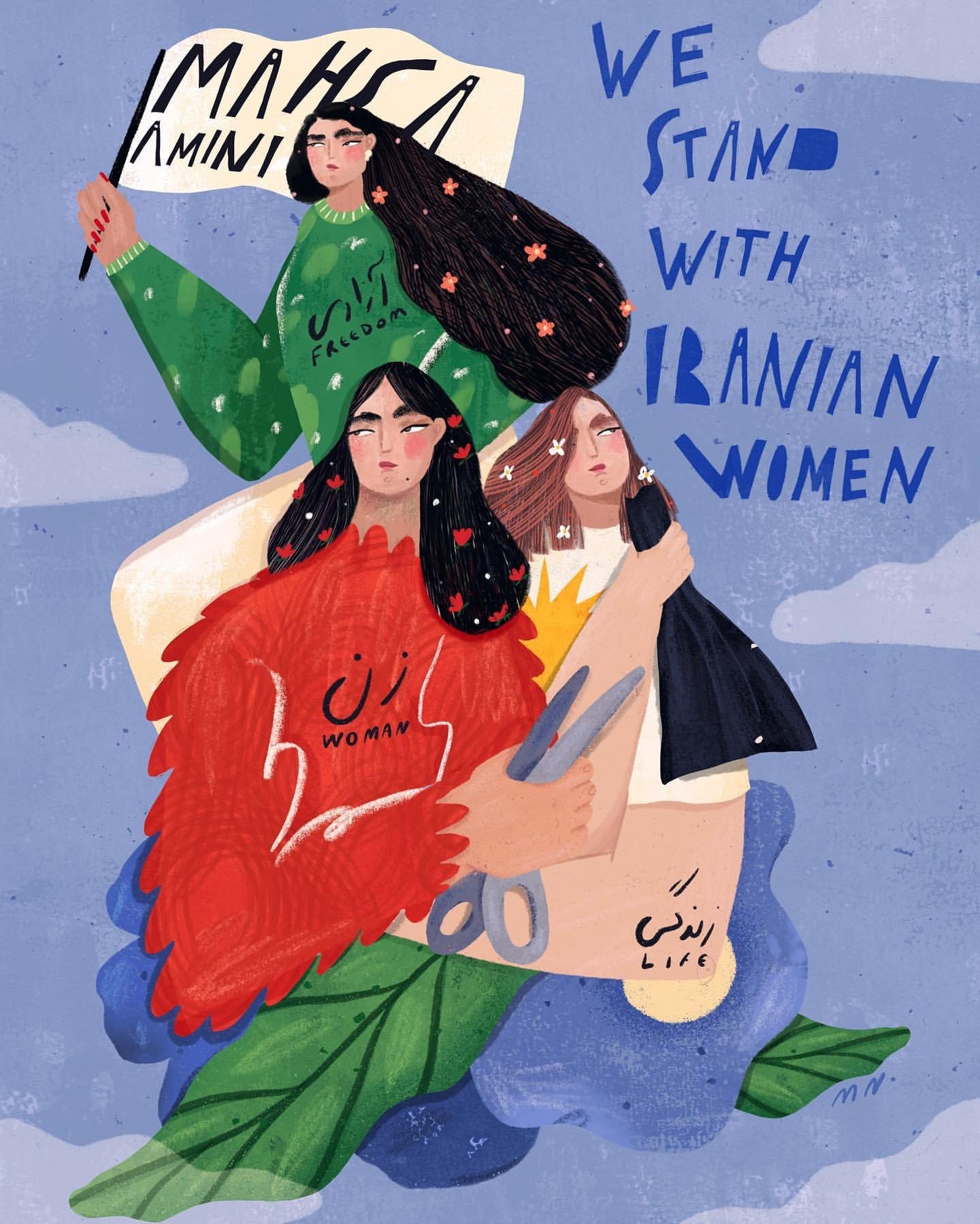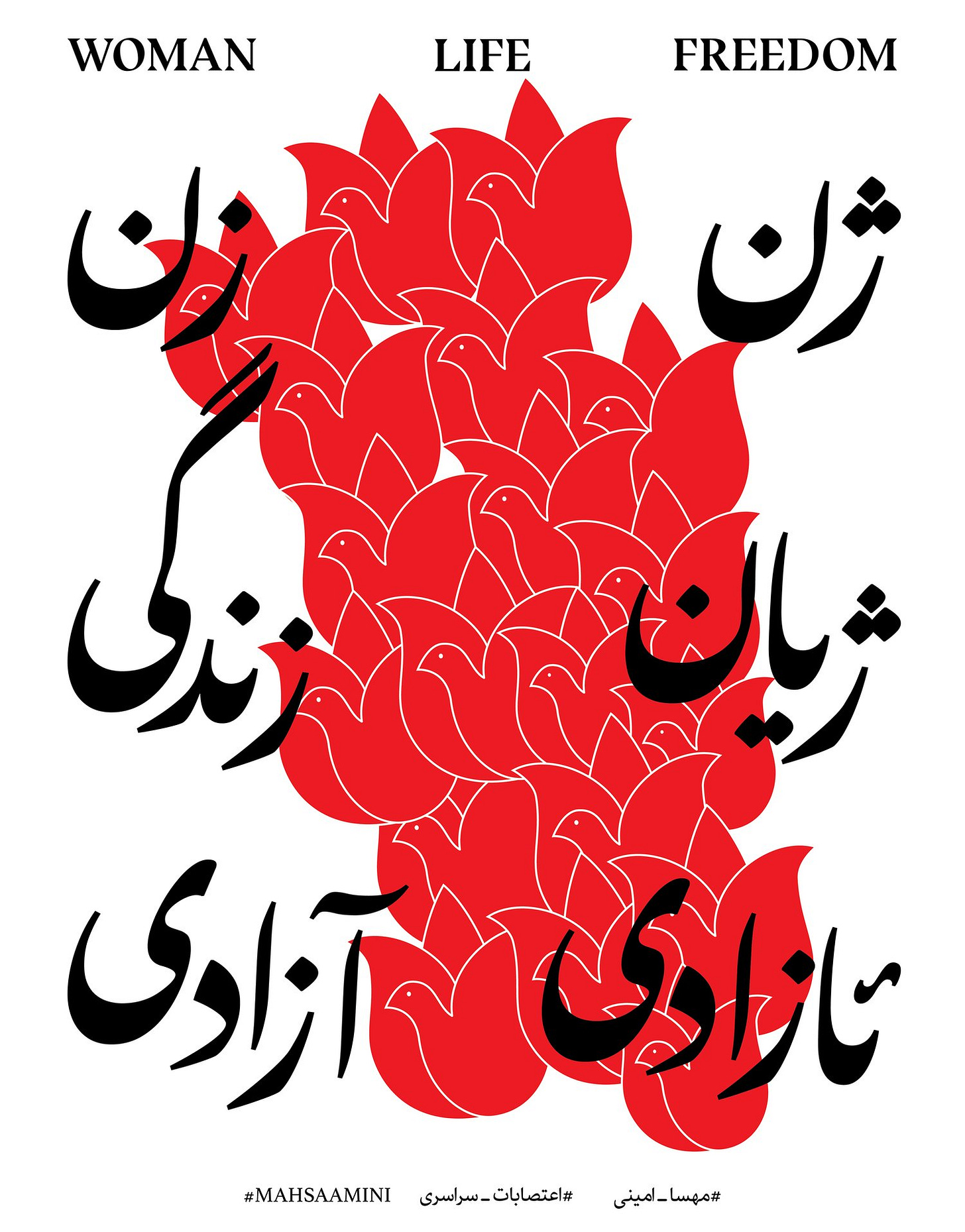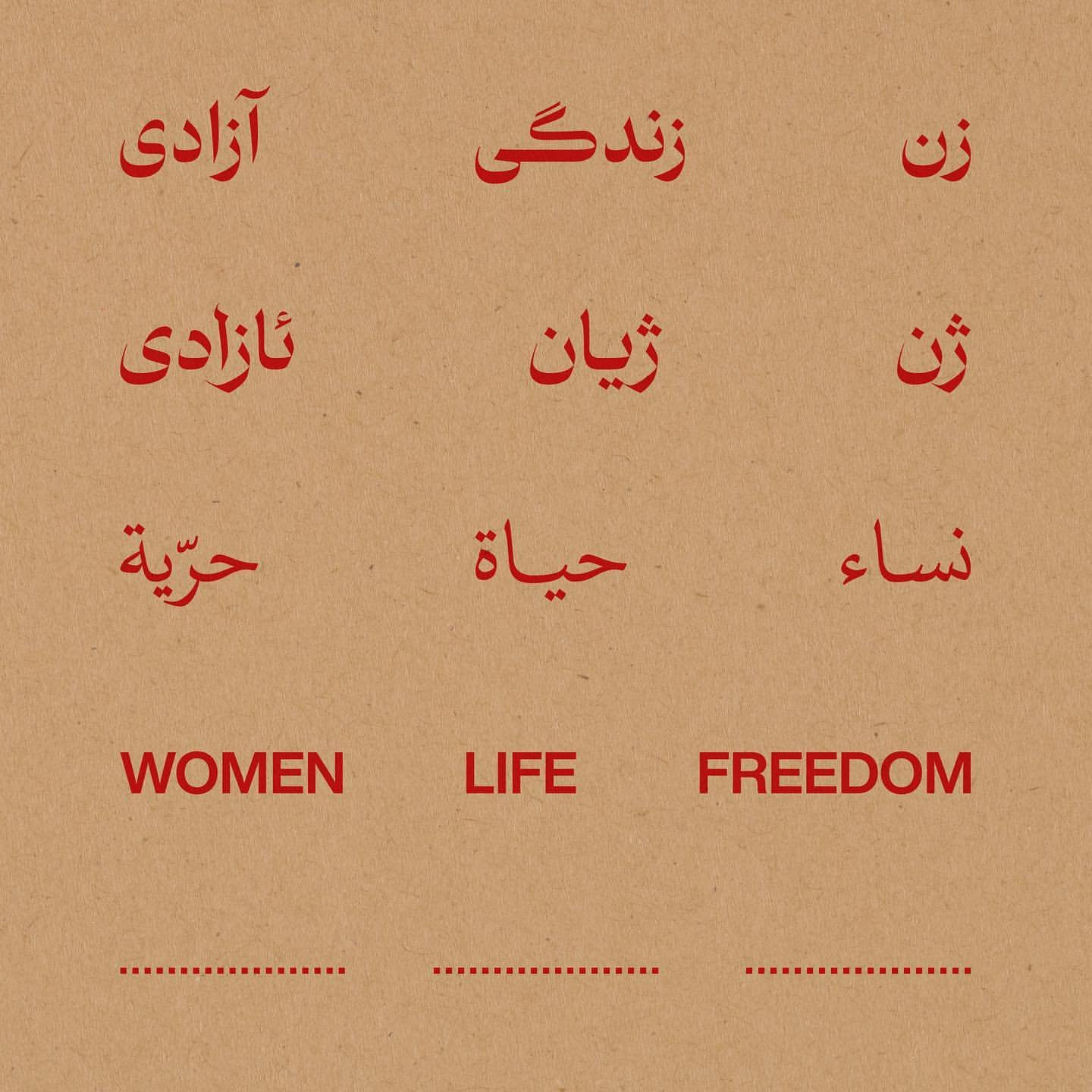Zan, Zendegi, Azadi: A Dialogue with "Iranian Women of Graphic Design"
Edition#2 | Women & Society
A few months ago while at Centre Pompidou in Paris, I spotted a wall with posters from across the world for the #WomenLifeFreedom movement that started in Iran. Bold, bright, and goose-skin-inducing, these posters were on display and up for grabs across public spaces in France for Women’s Day 2023, to throw light upon the women of Iran and their movement.
Upon asking the concierge, I discovered the world of @IranianWomenofGraphicDesign.
Zan, Zendegi, Azadi | In September 2022, Mahsa Amini, a 22-year old Iranian woman died in a hospital in Tehran in police custody after being tortured and beaten up for not wearing a hijab by Iran’s “Morality Police”. Her death led to the most widespread eruption of protests in Iran since 2009. Protests started in Saqez, Amini’s hometown, during her funeral and spread across the country. During Amini’s funeral, Kurdish women removed their headscarves and chanted in Kurdish, “Jin, Jiyan, Azadi” or “Woman, Life, Freedom.” The Persian translation “Zan, Zendegi, Azadi” became the chant in Farsi-speaking parts of the country. Women started cutting their hair, a symbol of grief, power and protest. Historically, hair is cut in times of mourning in Iran. With these protests, cutting hair became a symbol of dissent and renunciation of beauty that is so decreed.
In honouring Amini’s life and through those protests, the Woman Life Freedom movement was born, becoming a global action in solidarity with Iranian women and girls who are courageously demonstrating peacefully for their fundamental rights.
Social Media & Dissent in Iran | Over the next few months, social media played a very important role in keeping protests aflame in Iran, especially since it is practically impossible for foreign media to report from ground. According to Mahsa Alimardi, senior researcher on freedom of expression online with Article 19, a human rights organization based in London, “Social Media is spreading awareness and solidarity, not just internationally, but inside Iran. The ability to witness your fellow citizens and your fellow women taking a stand has a very significant role in mobilizing—maybe not in terms of directly telling you exactly where to go on the street but incentivizing you to actually walk out and discover where the protests are happening in your neighborhood. How I would really define it is that technology has this ability to create this opportunity to witness and kind of incentivize solidarity—to incentivize mobilization rather than determining the exact shape and form of protest, movements, or the eventual movement to democracy.”
Iranian Women of Graphic Design | Born on social media, Iranian Women of Graphic Design (IWoGD) is a collective of independent artists that support the Woman Life Freedom movement through visual arts.
The inspiration for this initiative emerged when a book called "100 Years of Iranian Graphic Design History" was released in Teheran. The book featured contributions from 100 designers, but only 5 of them were women. This publication sparked conversations about the role of women in graphic design and other art fields, leading to the establishment of @IranianWomenofGraphicDesign. In the autumn of 2020, @IranianWomenofGraphicDesign was launched, and it quickly gained traction. Within a few hours of its inception, the platform showcased over 100 works by women designers, drawing attention to the systematic oppression faced by women in the hands of state publishers.
I interviewed the founding members of the collective to discover more about their campaign #WomenLifeFreedom and their message to the world.
“The creative solutions around censorship give Iranian art a multilayered language, with many open and hidden metaphors and a special character.”
RB: Who would you say are the Iranian Women of Graphic Design today?
IWoGD: The title Iranian Women of Graphic Design initially referred to a collective of Iranian women working as graphic designers. In the beginning, Iranian Women of Graphic Design meant a collective of non-male designers who identify as Iranian, live inside and outside Iran, and work in the field of visual communication. This is the primary concept of Iranian Women of Graphic Design.
After the death of Mahsa Amini, the concept of Iranian women graphic designers has evolved. Today, it is not only a collective of non-male designers who identify themselves as Iranian, but any person, regardless of nationality and gender, who stands up for women's rights is also part of this collective. The common thread that connects @IranianWomenofGraphicDesign and the #WomanLifeFreedom movement is our shared commitment to fighting against the oppression and violation of women's rights, while advocating for equal justice and freedom. It's important to note that the current movement operates on a much broader scale, encompassing various social, cultural, political, and other domains.
RB: Iran has an old and beautiful heritage, and an art scene that thrives on its own. How do other forms of art sustain under censorship?
IWoGD: Historically, Iran has always been more or less under censorship in different ways, even though the levels on censorship across music, theatre, films, visual arts and even social media. The artists, poets, writers, filmmakers and all creative people from every field have always found creative solutions to overcome the censorship. These creative solutions give Iranian art a multilayered language, with many open and hidden metaphors and a special character.
An example is the film Taxi (2015) by Jafar Panahi, which he shot in Iran in his car, even though the Iranian regime has banned him from making films in Iran. “Taxi" is seen as a creative act of resistance against censorship and a commentary on the power of filmmaking as a means of expression. It follows Jafar Panahi himself, who portrays a taxi driver in Tehran, driving a yellow taxi and picking up various passengers throughout the city. The passengers, who are unaware that they are being filmed, engage in conversations that touch upon a wide range of topics, including censorship, women's rights, crime, and the power dynamics within Iranian society. Despite facing a ban, Jafar Panahi managed to shoot "Taxi" secretly using dashboard-mounted cameras inside a real taxi. The film was smuggled out of Iran for post-production and premiered at international film festivals, where it received critical acclaim and won several awards, including the Golden Bear at the Berlin International Film Festival.
RB: Iranian women have set newfound standards that define courage and audacity. Despite receiving grave setbacks, threats to life, where does this fearlessness come from time and again?
IWoGD: Women in Iran have done everything possible over the past 44 years to achieve more freedom. They have all gone peaceful ways to achieve change and improvement within the Islamic Iranian regime. But their peaceful attempts were always answered with violence, arrest, rape and death sentences.
They now know that there is no possibility for change and improvement in this regime and that they and the next generations will not have a better life and future under this regime. They know that they could be the next person who is affected and killed. That is why they stand up so bravely for their rights, even in front of the bullets.
”This revolution is led by women, but of course it is not only for women, but for all people. People who are more aware than ever before and no longer want to live under oppression. People who want to realise their wishes and dreams, who say what they think, who live what they want.”
RB: What is your message to women in other societies across the globe?
IWoGD: Women, life, freedom is not a regional issue, but something universal. The women of all countries must stand up for each other and support each other. The resistance of women in one country inspires and motivates women in other countries, and accordingly the fight and freedom of women in one country means the fight and freedom of all women living under religious, ideological and dictatorial regimes everywhere.
Therefore, it is important that we do not give up our fight and support, and that we give them a voice and amplify it, whether in demos in the streets or on social media.
This revolution is led by women, but of course it is not only for women, but for all people. People who are more aware than ever before and no longer want to live under oppression. People who want to realise their wishes and dreams, who say what they think, who live what they want.
If you would like to access the public shared drive of all the submissions made to IWoGD, see it here
Further reading: Iran & graphic design
Social Media, Censorship & Dissent in Iran



